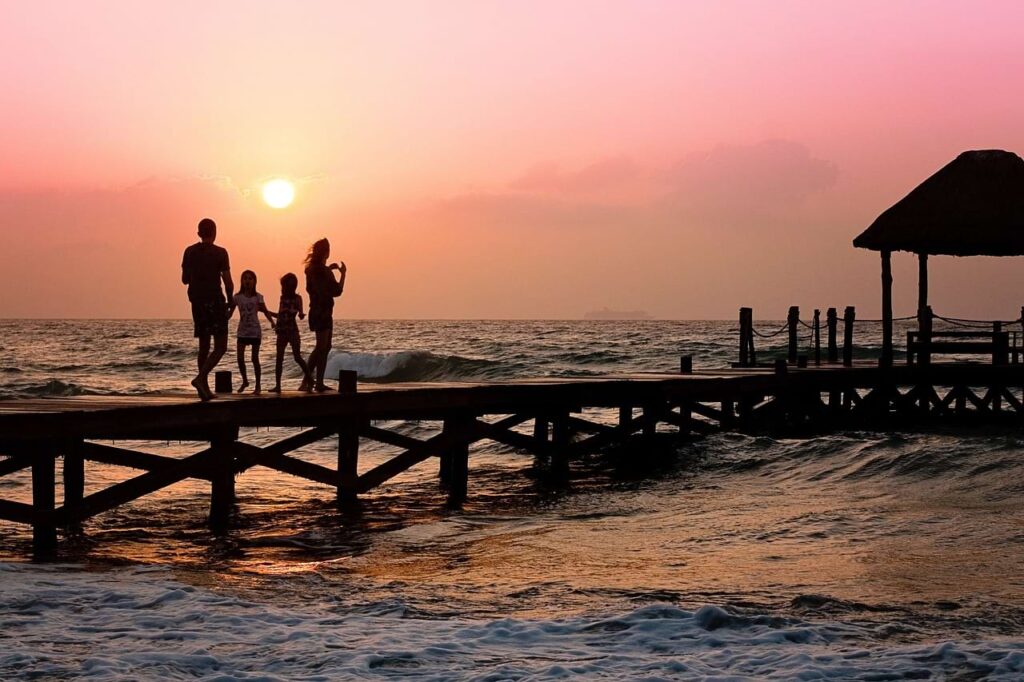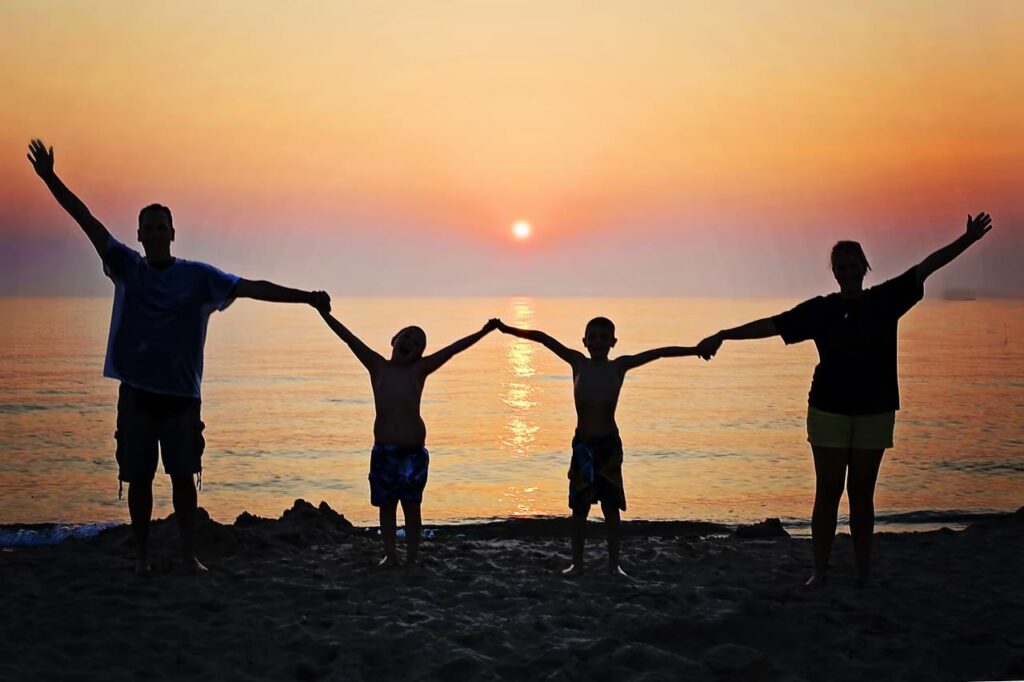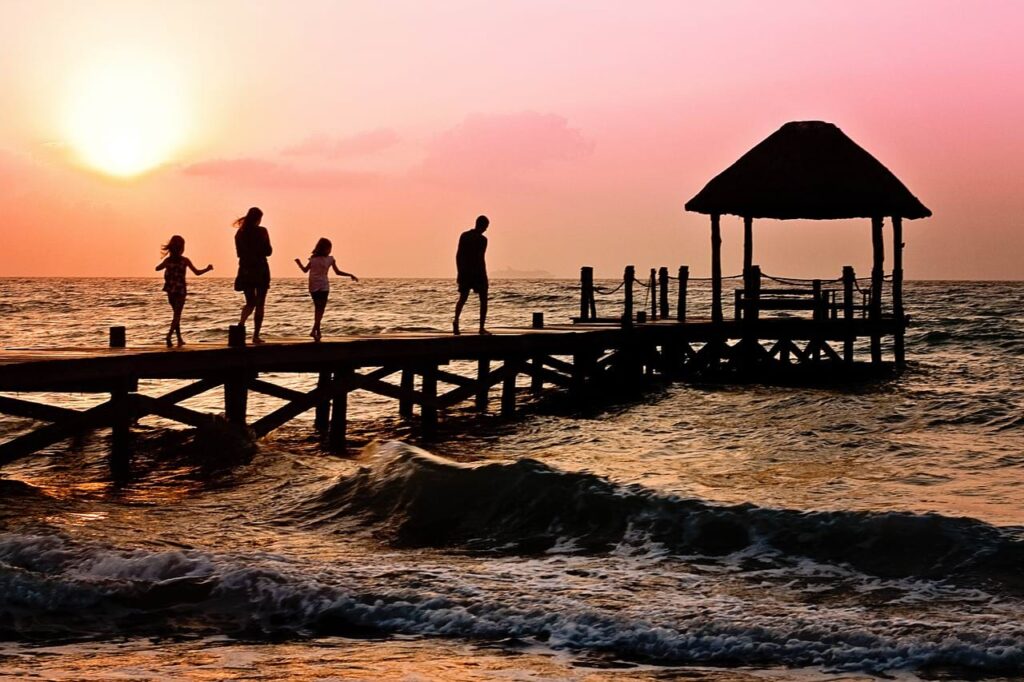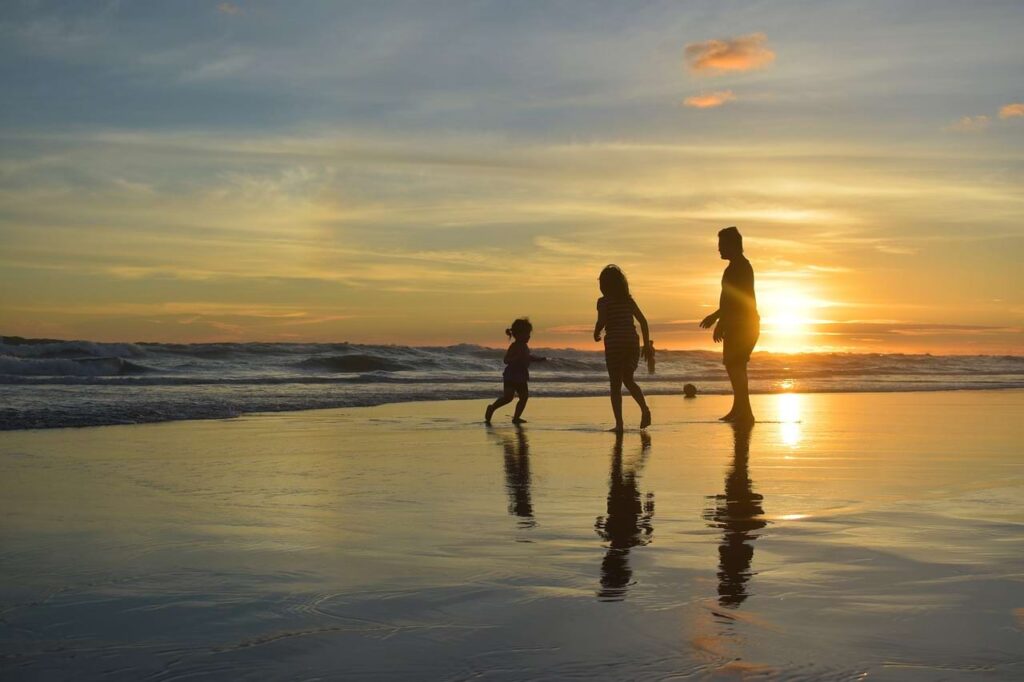Hey there, family adventurers!
Are you gearing up to plan your first family holiday and wondering where to start? Planning a family holiday can feel like navigating uncharted waters, but with a bit of organization and some handy tips, it can turn into an exciting adventure. As someone who’s been through the ropes of family holiday planning, I’m here to guide you through making this experience as smooth and enjoyable as possible. So, let’s dive into the tips and tricks that will help you plan a fantastic family holiday!

1. Involving the Whole Family in Planning
- Kickstarting the Adventure: Begin the holiday planning with an exciting family meeting. This isn’t just any ordinary meeting; make it fun – perhaps over a special family dinner or a living-room campout. Here, let everyone voice their dream destinations, favorite activities, and any particular needs or wishes they might have for the holiday.
- Making Everyone Feel Heard: It’s important that each family member feels their ideas are valued. This could mean combining various interests – like including a day at an amusement park for the kids and a cultural excursion for the adults. For teenagers, giving them a degree of choice, like picking a restaurant or an activity, can make the trip more engaging for them.
- Using Visuals and Resources: Bring maps, travel brochures, or use travel websites to explore options together. This can be an educational opportunity for kids to learn about different places and cultures, turning planning into a fun and informative activity.
2. Picking the Right Destination
- Family-Friendly Considerations: When choosing a destination, look for places known for being family-friendly. This might mean they offer a good mix of activities for various age groups, have child-friendly facilities, or are known for their safety and ease of getting around.
- Balancing Interests and Practicality: Mix leisure with adventure, relaxation with exploration. Beach destinations can offer relaxation for adults and fun activities for kids. Cities with well-developed tourist infrastructure can provide a blend of historical sightseeing and modern attractions.
- Accessibility and Convenience: Consider how easy it is to travel to the destination. Direct flights, short driving distances, or convenient train routes can make the journey less stressful, especially with young children or elderly family members.

3. Timing and Duration of the Trip
- Scheduling Around School and Work: Align your travel plans with school holidays and work schedules. This reduces stress and ensures that children don’t miss out on important school activities.
- Length of the Trip: The ideal duration of a family holiday can vary depending on the ages and temperaments of your children. Young kids might find it difficult to be away from home for long periods, so a shorter holiday might be more suitable. Conversely, older children might enjoy longer trips that offer a deeper exploration of the destination.
- Accounting for Jet Lag and Rest Days: If traveling across time zones, factor in days for adjustment to avoid exhaustion. It’s also wise to plan for a rest day upon arrival, especially after a long journey, to start the holiday on a relaxed note.
4. Accommodation: Comfort is Key
- Selecting the Right Stay: The choice of accommodation can significantly impact your family holiday. Look for places that offer family suites or interconnected rooms for larger families. Consider accommodations with kitchen facilities, which can be a lifesaver for early breakfasts or late-night snacks, especially with younger kids.
- Kid-Friendly Amenities: Hotels or resorts with kid-friendly amenities like swimming pools, playgrounds, or activity clubs can enhance your family holiday experience. These facilities not only entertain the children but also give parents some much-needed downtime.
- Location Matters: Choose accommodations located centrally or close to major tourist spots to minimize travel time and hassle. Proximity to public transport, restaurants, and convenience stores is also a bonus.

5. Creating a Balanced Itinerary
- Planning a Family-Friendly Itinerary: While creating your itinerary, mix popular tourist attractions with some off-the-beaten-path experiences. Include activities that cater to different age groups and interests within your family. Museums with interactive exhibits, nature parks, and historical sites with engaging tours can be enjoyable for both kids and adults.
- Scheduled Downtime: Avoid the temptation to cram too many activities into each day. Children, in particular, can get overwhelmed by a packed schedule. Plan for relaxed evenings or a free afternoon for spontaneous activities or simply to unwind at your accommodation.
- Flexibility is Crucial: Keep your plans flexible. With a family, unexpected situations like a child feeling unwell or just a change in mood can mean alterations to your planned itinerary. Having a ‘plan B’ for such instances can keep the holiday enjoyable and stress-free.
6. Budgeting for the Whole Family
- Realistic Budget Planning: When budgeting for a family holiday, consider all expenses: travel, accommodation, food, entrance fees for attractions, souvenirs, and unexpected costs. A detailed budget helps prevent overspending and ensures a comfortable trip.
- Cost-Saving Tips: Look for family discounts and deals. Many attractions offer family passes or reduced rates for children. Eating out for every meal can be expensive, so consider accommodations with breakfast included or self-catering options.
- Pre-Booking Advantages: Pre-booking major attractions and tours can often save money. It also helps in better managing your holiday budget, as you’ll have a clearer idea of the remaining funds for other expenses.

7. Packing Smart and Efficiently
- Organized Packing Approach: Creating a packing list is crucial to ensure you don’t forget anything important. Categorize items into essentials like clothing, toiletries, and travel documents, and extras such as games, swim gear, or special snacks. For younger children, remember to pack their favorite toy or blanket to provide comfort in a new environment.
- Involve the Kids: Let your children participate in packing their own luggage. This not only teaches them responsibility but also builds their excitement for the trip. For smaller kids, you can turn packing into a game to make it more engaging.
- Pack for All Conditions: Be prepared for various weather conditions and activities. Include layers for colder weather and waterproof jackets. Don’t forget sun hats, sunscreen, and insect repellent for outdoor excursions.
8. Preparing for the Journey
- Making Travel Fun and Comfortable: Long journeys can be tiresome for children. Prepare a travel kit with items to keep them entertained, such as books, coloring materials, travel games, and favorite toys. Download movies or apps on tablets or portable devices for older children.
- Essential Snacks and Drinks: Pack a variety of snacks and drinks to keep everyone hydrated and satisfied during the journey. Choose snacks that are less likely to cause messes or require refrigeration. Reusable water bottles with filters can be a great option for ensuring access to clean water.
- Plan for Regular Breaks: If you’re driving, plan for regular stops to stretch, use restrooms, and let kids burn off some energy. When flying, encourage your children to walk around the cabin occasionally (if the flight conditions allow) to avoid restlessness.

9. Staying Safe and Healthy
- Health and Safety First: Before your trip, check if any specific vaccinations are needed. Pack a travel health kit with essential medication, first aid supplies, and copies of prescriptions. Remember to bring any regular medication your family members require.
- Safety Precautions: Discuss safety with your family, especially if you’re visiting crowded or unfamiliar places. For younger children, consider safety harnesses or wristbands with contact information. Teach your children to stay where they are if they get lost and how to identify safe people to ask for help, like police officers or other families.
- Travel Insurance: Invest in comprehensive travel insurance that covers medical emergencies, trip cancellations, and lost luggage. This can give you peace of mind knowing you’re covered for unexpected situations.
10. Documenting Your Family Holiday
- Capturing the Joy: One of the best parts of a family holiday is looking back at the moments you captured. Equip yourself with a good camera or use your smartphone to take plenty of photos and videos. Encourage your kids to do the same; they often capture the most candid and memorable moments.
- Variety in Memories: Mix formal posed photos with spontaneous, candid shots. Remember to capture not just the places but the people and the small details that made your trip special. Videos are great for capturing the essence of your experiences – the sounds, movements, and dynamics of your family interactions.
- Journaling and Scrapbooking: Encourage your kids to keep a travel journal or a scrapbook. They can write about their experiences, stick mementos like tickets or postcards, and draw what they saw and did. This not only keeps them engaged during the trip but also serves as a wonderful keepsake.

11. Being Flexible and Adaptable
- Expect the Unexpected: When traveling with family, it’s essential to be adaptable. Plans might change due to weather, health issues, or simply because the mood shifts. Having a flexible mindset allows you to make the most of these situations.
- Finding Joy in Spontaneity: Some of the best travel memories come from unexpected adventures. Be open to last-minute changes or local recommendations that deviate from your itinerary. This can lead to discovering hidden gems and creating unique experiences.
- Managing Meltdowns and Mishaps: Traveling, especially with kids, can come with its set of challenges. From tiredness leading to tantrums to missing a scheduled tour, be prepared to handle these situations calmly. Sometimes, a break or a treat can turn things around.
12. Reflecting and Learning for Next Time
- Gather Feedback from the Family: After your trip, take some time to talk about what everyone enjoyed the most and what could be improved for future trips. This can be a fun family activity where you reflect on the highs and lows of your holiday.
- Learning from Experience: Each trip is a learning opportunity. You’ll discover more about your family’s travel preferences, interests, and the dynamics of traveling together. Use these insights to make your next family holiday even smoother and more enjoyable.
- Planning the Next Adventure: Keep the excitement of travel alive by starting to think about your next destination. Involving the family in this discussion can be a great way to reminisce about the past holiday while looking forward to future adventures.

Conclusion: Embracing the Joy of Family Holidays
Planning your first family holiday might seem daunting at first, but it’s an incredibly rewarding experience. It’s about more than just the destination; it’s about the joy of exploring together, the bond you strengthen as a family, and the memories you create. By involving the whole family in the planning process, staying organized, and being adaptable, you’re setting the stage for a fantastic holiday that everyone will remember for years to come.
So go ahead, embrace the adventure, and start planning that dream family holiday. The world is waiting for you and your family to explore it together!
Happy travels, and here’s to many more family adventures on the horizon!
You May Also Like:
